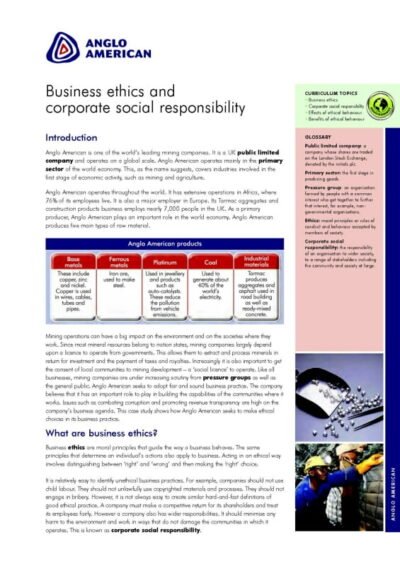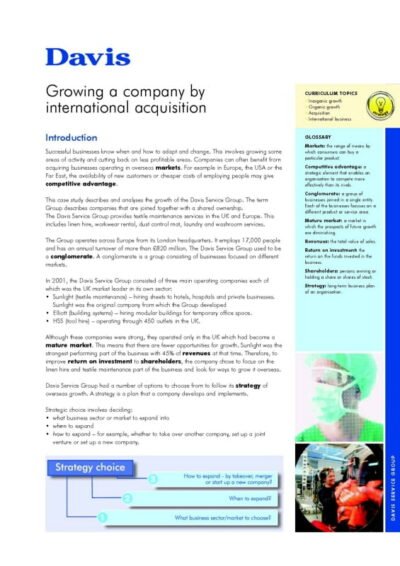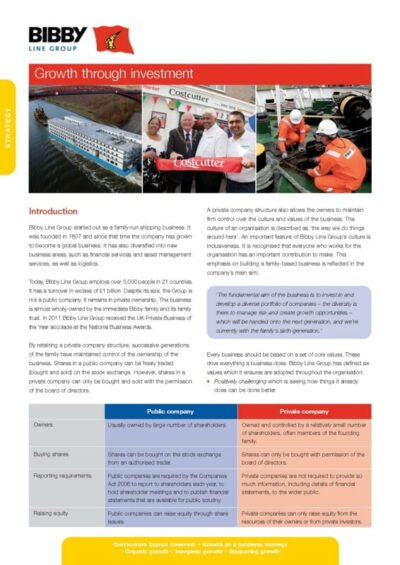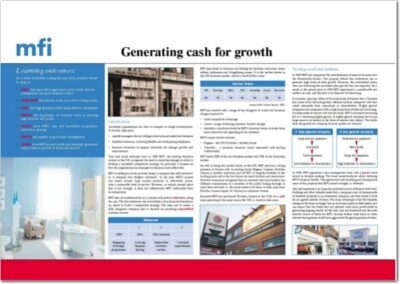The concept of exit multiple is a fundamental aspect of business valuation, particularly in the context of mergers and acquisitions (M&A). An exit multiple is essentially a financial metric that reflects the value of a business at the time of its sale or exit, expressed as a multiple of a relevant financial metric, such as earnings before interest, taxes, depreciation, and amortisation (EBITDA), revenue, or net income. This multiple serves as a benchmark for investors and analysts to gauge the potential return on investment (ROI) when they consider selling a business or acquiring one.
In practice, exit multiples are derived from comparable company analysis, where analysts look at similar businesses within the same industry to determine an appropriate multiple. For instance, if a company in the technology sector is sold for 10 times its EBITDA, this figure can serve as a reference point for valuing other tech companies. The exit multiple is not static; it fluctuates based on market conditions, investor sentiment, and the specific characteristics of the business being evaluated.
Understanding this metric is crucial for stakeholders involved in the financial landscape, as it provides insights into market trends and potential investment opportunities.
Summary
- Exit multiple is a key metric used to determine the value of a business when it is sold or acquired.
- Understanding exit multiple is crucial for business valuation as it provides insight into the potential return on investment for buyers and sellers.
- Factors affecting exit multiple include industry trends, company performance, market conditions, and the overall economic environment.
- Different types of exit multiple include EBITDA multiple, revenue multiple, and EBIT multiple, each providing a unique perspective on business valuation.
- Calculating exit multiple involves dividing the enterprise value by a financial metric such as EBITDA, revenue, or EBIT, and is an essential step in the valuation process.
The Importance of Exit Multiple in Business Valuation
Simplifying Valuation in Complex Scenarios
This is particularly useful in scenarios where traditional valuation methods, such as discounted cash flow (DCF) analysis, may be less applicable or more complex. Moreover, exit multiples facilitate comparisons across different companies within the same sector. For instance, if two firms operate in the same industry but exhibit varying growth rates or profitability levels, their respective exit multiples can highlight these differences.
Comparative Analysis for Informed Investment Decisions
A higher exit multiple may indicate that investors expect greater future growth or stability from one company compared to another. This comparative analysis is invaluable for private equity firms and venture capitalists who seek to identify promising investment opportunities while minimising risk.
Unlocking Insights into Company Performance
By examining exit multiples, investors can gain valuable insights into a company’s performance and potential. This information can inform strategic investment decisions, enabling investors to make more informed choices and drive business growth.
Factors Affecting Exit Multiple
Several factors influence the determination of exit multiples, making them dynamic rather than fixed values. One of the primary factors is market conditions; during periods of economic growth, exit multiples tend to rise as investor confidence increases and competition for acquisitions intensifies. Conversely, in times of economic downturn or uncertainty, multiples may contract as buyers become more cautious and valuations are scrutinised more closely.
Another significant factor is the specific characteristics of the business being evaluated. Companies with strong brand recognition, robust customer loyalty, and consistent revenue streams often command higher exit multiples than those lacking these attributes. Additionally, growth potential plays a crucial role; businesses that demonstrate innovative products or services and have a clear path to expansion are likely to attract higher multiples.
Industry trends also contribute to variations in exit multiples; sectors experiencing rapid technological advancements or regulatory changes may see fluctuating valuations as investors reassess their expectations.
Different Types of Exit Multiple
Exit multiples can be categorised into various types based on the financial metric used for valuation. The most common types include EBITDA multiples, revenue multiples, and net income multiples. EBITDA multiples are widely favoured due to their ability to provide a clearer picture of operational performance by excluding non-operational expenses and accounting practices that may distort profitability.
This makes EBITDA a reliable measure for comparing companies across different industries. Revenue multiples are another prevalent form of exit multiple, particularly in high-growth sectors such as technology and e-commerce. These multiples focus on top-line revenue rather than profitability, which can be particularly useful for startups or companies in their early stages that may not yet be profitable but exhibit strong sales growth.
Net income multiples, while less common, can also be employed to assess a company’s value based on its bottom-line profitability. Each type of exit multiple has its advantages and limitations, and the choice of which to use often depends on the specific context of the valuation.
How to Calculate Exit Multiple
Calculating an exit multiple involves a straightforward formula that requires selecting an appropriate financial metric and determining the corresponding market value of the business. The basic formula for calculating an exit multiple is: Exit Multiple = Enterprise Value / Financial Metric For instance, if a company has an enterprise value (EV) of £10 million and generates £2 million in EBITDA, the exit multiple would be calculated as follows: Exit Multiple = £10 million / £2 million = 5x This indicates that the company is valued at five times its EBITDIt is essential to ensure that the financial metric used aligns with industry standards and reflects the company’s operational performance accurately. Analysts often gather data from comparable companies to establish a range of exit multiples that can be applied to the target business.
In practice, analysts may also adjust the calculated exit multiple based on qualitative factors such as market conditions, competitive positioning, and growth prospects. This adjustment process requires a nuanced understanding of both quantitative data and qualitative insights to arrive at a realistic valuation that reflects current market dynamics.
Using Exit Multiple in Mergers and Acquisitions
In the realm of mergers and acquisitions, exit multiples serve as critical tools for both buyers and sellers during negotiations. For sellers, understanding their company’s exit multiple can help set realistic expectations regarding valuation during the sale process. By benchmarking against industry standards and comparable transactions, sellers can present their business in a manner that highlights its strengths and justifies their asking price.
For buyers, exit multiples provide a framework for assessing whether an acquisition target represents a sound investment opportunity. By applying an appropriate multiple to the target’s financial metrics, buyers can estimate its potential value and determine if it aligns with their strategic objectives. Furthermore, understanding exit multiples allows acquirers to evaluate potential synergies that could enhance the target’s value post-acquisition.
The use of exit multiples in M&A transactions also extends to deal structuring. Buyers may negotiate terms based on projected future performance relative to established exit multiples. For example, if a buyer anticipates that a target company will achieve higher growth rates than its peers, they may be willing to pay a premium based on expected future performance rather than solely relying on historical data.
Common Mistakes to Avoid When Using Exit Multiple
While exit multiples are valuable tools in business valuation, several common pitfalls can lead to inaccurate assessments if not carefully navigated. One frequent mistake is relying solely on historical data without considering current market conditions or future growth prospects. Valuations based on outdated information may not accurately reflect the current state of the industry or economic environment.
Another common error is failing to account for differences between comparable companies when determining appropriate exit multiples. Analysts must ensure that they are comparing businesses with similar characteristics, such as size, growth stage, and market positioning. Using an inappropriate benchmark can lead to misleading valuations that do not accurately represent the target company’s worth.
Additionally, analysts should be cautious about over-relying on a single type of exit multiple without considering other relevant metrics. While EBITDA multiples are popular, they may not always provide a complete picture of a company’s value. Incorporating revenue and net income multiples into the analysis can yield a more comprehensive understanding of valuation dynamics.
The Future of Exit Multiple in Business Valuation
As markets evolve and industries undergo transformation due to technological advancements and changing consumer behaviours, the role of exit multiples in business valuation is likely to adapt accordingly. The increasing prevalence of data analytics and artificial intelligence in financial analysis may lead to more sophisticated methods for determining exit multiples that incorporate real-time market data and predictive modelling. Moreover, as investors become more focused on sustainability and social responsibility, there may be shifts in how exit multiples are calculated and interpreted.
Companies demonstrating strong environmental, social, and governance (ESG) practices could command higher exit multiples as investors seek to align their portfolios with ethical considerations. In conclusion, while exit multiples have long been integral to business valuation processes, their application will continue to evolve in response to changing market dynamics and investor preferences. As stakeholders navigate this landscape, understanding the nuances of exit multiples will remain essential for making informed investment decisions in an increasingly complex financial environment.
Exit multiple is a crucial concept in the world of business valuation. Understanding how to calculate and interpret this metric is essential for investors and entrepreneurs alike. For further insights into the world of business, one can explore the article on developing a communications strategy. Effective communication is key to the success of any business, and this article provides valuable tips and strategies for enhancing communication within an organisation.
FAQs
What is an exit multiple?
An exit multiple is a financial metric used to determine the value of a company or investment at the time of its sale or exit. It is typically calculated by dividing the company’s enterprise value by a measure of its financial performance, such as EBITDA (earnings before interest, taxes, depreciation, and amortization).
How is exit multiple used in business valuation?
Exit multiples are commonly used in business valuation to estimate the potential selling price of a company. By applying a multiple to the company’s financial performance, such as EBITDA, investors and buyers can gauge the company’s value in the market.
What factors can affect exit multiples?
Several factors can influence exit multiples, including industry trends, economic conditions, company growth potential, market competition, and the overall risk associated with the investment. Additionally, the company’s financial performance and historical growth can also impact the exit multiple.
What are the different types of exit multiples?
The most common types of exit multiples include EBITDA multiple, revenue multiple, and net income multiple. Each type of multiple focuses on a different aspect of the company’s financial performance and can provide varying perspectives on its value.
How do investors use exit multiples?
Investors use exit multiples as a benchmark for evaluating potential investment opportunities and assessing the potential return on investment. By comparing the exit multiples of similar companies within the industry, investors can make informed decisions about the attractiveness of a particular investment.
 Developing a customer focused sales strategy (PDF)
Developing a customer focused sales strategy (PDF)  How the role of marketing drives business forwards (PDF)
How the role of marketing drives business forwards (PDF)  Controlling cash flow for business growth (PDF)
Controlling cash flow for business growth (PDF)  Management styles in the oil and gas industry (PDF)
Management styles in the oil and gas industry (PDF)  Vision, values and business strategies (MP3)
Vision, values and business strategies (MP3)  Business ethics and corporate social responsibility (PDF)
Business ethics and corporate social responsibility (PDF)  Developing the skills for managing change (PDF)
Developing the skills for managing change (PDF)  Growing a company by international aquisition (PDF)
Growing a company by international aquisition (PDF)  Vision, values and business strategies (PDF)
Vision, values and business strategies (PDF)  Creating a market (PDF)
Creating a market (PDF)  Developing a stronger customer focus (PDF)
Developing a stronger customer focus (PDF)  Growth through investment (PDF)
Growth through investment (PDF)  Generating cash for growth (PDF)
Generating cash for growth (PDF)  The role of PR in changing perceptions (PDF)
The role of PR in changing perceptions (PDF)  Decision making across the business cycle (PDF)
Decision making across the business cycle (PDF)  Focused, global and integrated (PDF)
Focused, global and integrated (PDF) 

